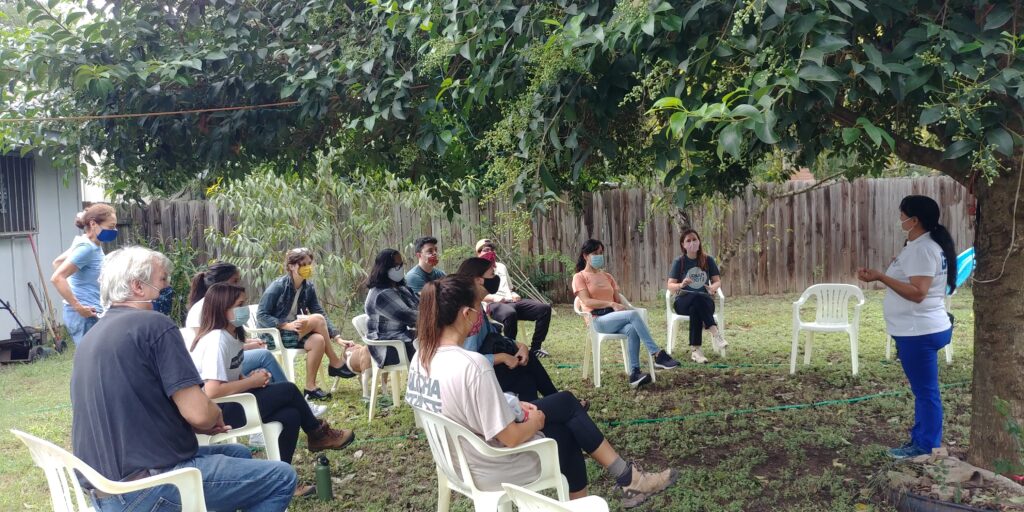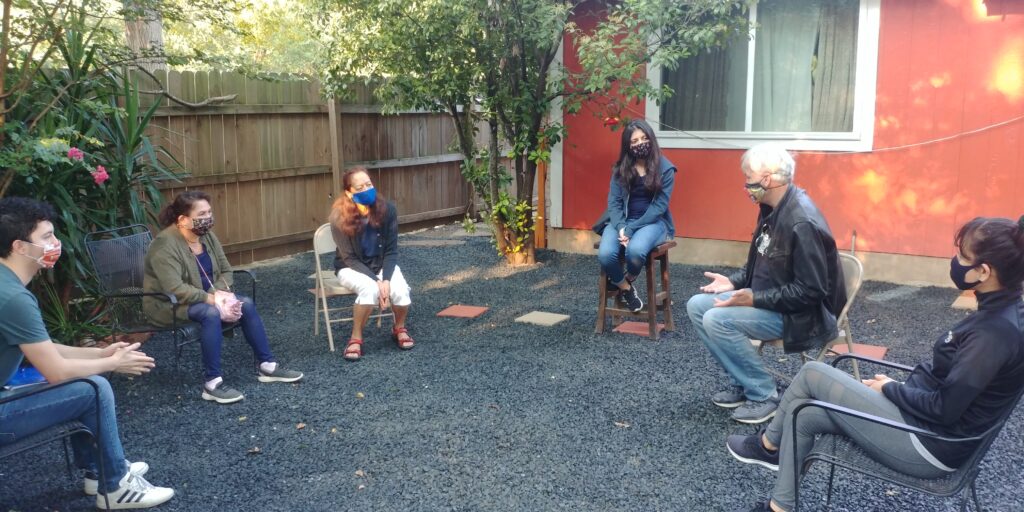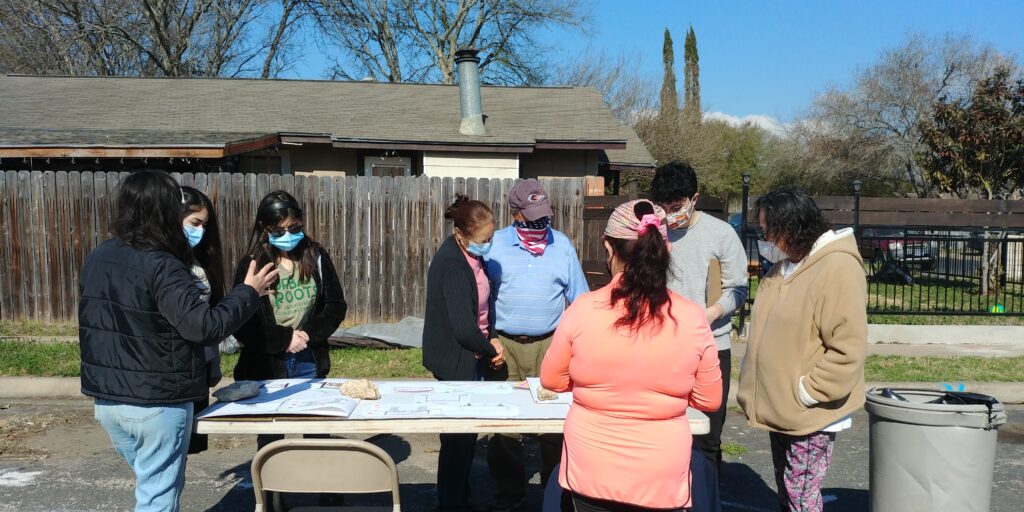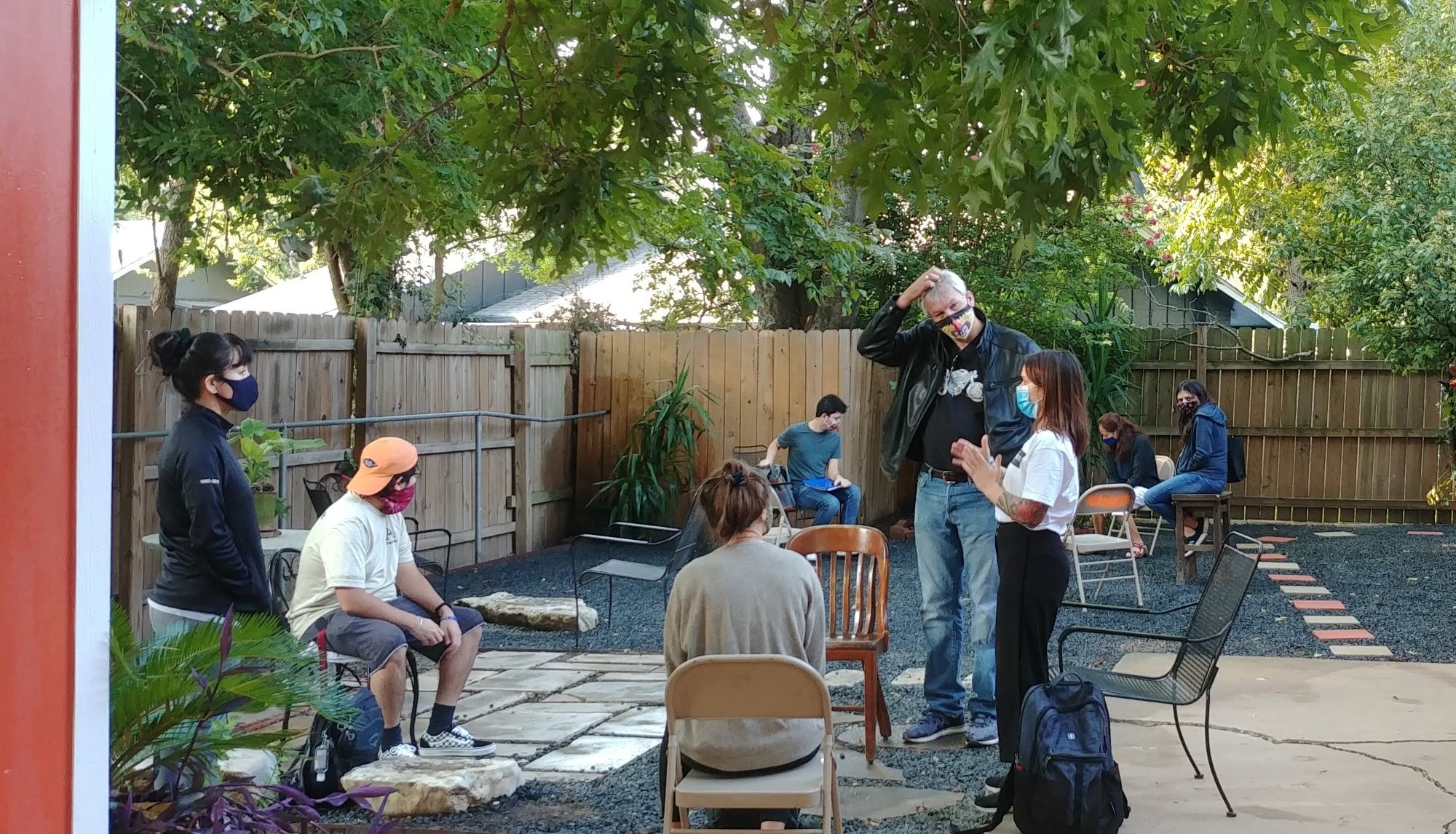Process
This project was conducted over the course of nine months. Beginning in September 2020, we met weekly on Saturday mornings in Dove Springs. We met in a variety of different places including the yards of Frances or the Creek Adopters, the creek/park/greenbelt, and the Dove Springs Recreation Center. We also met a couple of times on the University of Texas campus. Each Saturday had a focused agenda, and we would brainstorm ideas and get feedback on specific parts of the project which could range from discussing a particular method or protocol to discussing workshop logistics. Different partners involved in the project also took time to meet as needed outside of the weekly Saturday meetings.
For more information about our methods, see the project report here.


In March of 2021, we hosted two larger workshops: one community engagement event to get feedback from community residents and one workshop to discuss the floodwall murals with the mural artists. The community engagement event was a success! We had different “booths” to showcase different aspects of the project and lots of tacos made by Elena! Residents showed up to participate and seemed interested in learning more about the project as well as providing feedback.

Approach
Co-production of knowledge enables community groups to shift their position from knowledge consumers to knowledge producers. It is a way to connect academic knowledge with community-based knowledge and uncover crucial political and technical insights that could potentially be overlooked by professionals (Corburn, 2003). Therefore, as reflective practitioners, we focused on the importance of relationships, reciprocity, and trust in research while accepting the lack of structure at the beginning of the process.
“The exercise was a true reflection of co-production of research. At first, an interview protocol seems like a simple task that a planner can do themselves. However, when writing these questions, we did not realize we were being technical or incomprehensible. We thought the questions were simple until we got feedback from somebody who belonged to the community.”
Raviya
Constant reflection helped us understand how places are not static and are always in a state of becoming. The idea that places and spaces are static can have implications on the way people relate to their environments. By focusing solely on the physical and tangible aspects of a place, planners can create places that have an alienating and marginalizing effect. Instead of studying the site on our own and using prescriptive formulas to conceptualize it, we wanted to study how places are invented and negotiated by residents (Rios et al, 2012).
Methods such as walking interviews and photovoice allowed us to observe the community’s activities and interactions in the space and understand the social processes that shaped the park. These methods also allow all groups and stakeholders to learn important lessons from each other regardless of their formal training (Marti, F. et. al, 2012), thus providing a holistic understanding of the possibilities for the site.
Such co-productive methods serve to highlight community members’ lived experiences, thus informing and deepening the understanding provided by traditional planning tools. Most importantly, such an approach helps the practitioner observe and understand small everyday experiences which might be missed in mainstream approaches, including stories residents tell to make sense of their landscape and the context in which they live.
